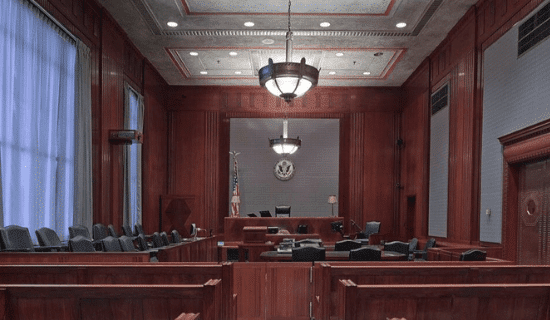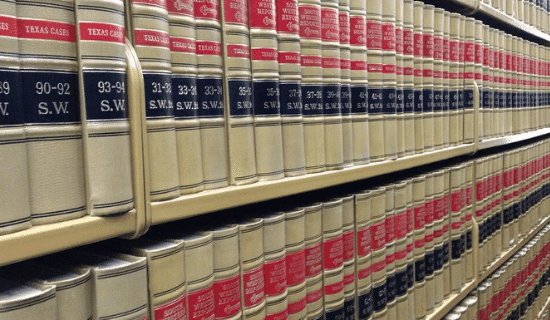Types of Negligence: What Victims and Families Need To Know
When a person suffers a serious injury, or even a tragic loss of life, as a result of a preventable accident, the accident that caused the injury may have been due to someone’s negligence. If an individual’s drunk driving, for example, results in a car crash that injures the occupants of another car, or a manufacturer’s failure to recall faulty parts leads to a worker being injured when a piece of machinery fails, the driver’s choice to drive recklessly or the manufacturer’s failure to remedy a dangerous situation can legally be deemed negligence, and the negligent party can be held liable for damages. There are several different types of negligence, and the specific type that might apply in a particular accident claim will depend on all of the contributing factors.
At their simplest, personal injury cases are based on the process of determining what person or entity was responsible for the accident that occurred, causing someone’s injury or death. Of course, the actual process of determining fault is rarely simple. Often, multiple factors or people contributed to the accident or share responsibility for what happened. Many personal injury cases result in not just one but several contributing factors leading to the injury.
In the least complex cases, the injured party is able to prove they did not conduct themselves in a reckless or irresponsible manner leading up to their injury whereas the defendant did ignore dangerous conditions or do something reckless or otherwise negligent that caused the accident. The defendant can be proven to have failed to act appropriately or failed to show appropriate care in such a way that ultimately led to the plaintiff’s injury.
The burden for the plaintiff’s attorney is to prove that the accident was indeed preventable, and to prove the source and type of negligence that led to the accident occurring. In order to prove these things, the attorney must possess a deep and thorough understanding of the various types of negligence as well as the five elements of negligence so they can build a firm foundation for their client’s claim.
 The 5 Elements of Negligence
The 5 Elements of Negligence
There are 5 elements of negligence that come into play in a personal injury claim. These elements are important because proving negligence is key to holding a person, company, or other entity responsible for damages when someone has been injured—sometimes in a way that is life-altering—or otherwise harmed in a preventable accident. Injuries resulting from an accident can include emotional and financial injury, as well as physical, and damages can address all three types of harm. The five elements of negligence are basically a system of legal proof to help ensure that the correct party is held responsible, and to the proper extent, so the accident victim can receive appropriate compensation for emotional distress, physical pain and suffering, medical bills, loss of income, funeral expenses, and others.
Duty
First, it must be established that the negligent person or party had a duty or obligation of care to the person who was harmed. For example, this might be the duty that an employer has to provide a safe workspace for employees, or the duty of a healthcare worker to provide patients with the proper doses of medications at appropriate intervals.
Breach of Duty
Next, it must be shown that the negligent party breached, or failed to fulfill, the duty they owed to the injured party.
Cause in Fact
After establishing a breach in the duty of care owed by the defendant to the plaintiff, the next step in a personal injury claim is to establish causation, meaning the cause-and-effect relationship between the defendant’s negligence and the accident, injury, or harm that resulted.
Proximate Cause
Along with cause in fact, proximate cause is another part of establishing causation—the cause-and-effect relationship between the negligence and the resulting harm. But where cause in fact is straightforward, proximate cause refers to the legal cause of the accident, and it may not be the first or primary cause of what happened that resulted in injury.
Damages
Finally, once duty, breach of duty, and causation have all been established, the damages of the accident must be proven—meaning the injury and all related medical bills, along with emotional pain and suffering, loss of income in the present as well as in the projected future, and so on. Proving damages is part of what will determine the type and amount of compensation to which the victim or surviving family member(s) is entitled.
 Gross Negligence: Texas Definition
Gross Negligence: Texas Definition
In personal injury cases, the term gross negligence refers to negligence that is so extreme and careless, with such catastrophic results, it constitutes a clear and utter lack of concern on the part of the negligent person or entity for others’ safety. When it comes to gross negligence, Texas law requires that personal injury attorneys establish clear and compelling evidence that the defendant was negligent to an extreme degree. It must be shown that there was a high degree of risk that was purposely ignored, thereby causing the accident.
In all states, gross negligence is determined by a matter of degree, both of the negligence itself and of the harm that it caused. When negligence is considered gross, that means the negligent party was consciously and voluntarily negligent. In other words, they were aware of their failure to exercise due caution and diligence, and also of the potential consequences of that failure. The harm that resulted from the accident caused by gross negligence is also extreme in degree, such as in catastrophic injury or wrongful death claims.
Ordinary Negligence Vs. Gross and Other Types of Negligence
Whereas gross negligence is an extreme or egregious level of carelessness with catastrophic results, ordinary negligence is carelessness to a less extreme, more basic degree, with results that, while serious or even severe, are not quite catastrophic. Ordinary negligence is also called general negligence, and both terms refer to a basic failure on the part of the defendant to exercise due care or caution for the safety of others.
Employers of workers who are required to use heavy equipment at the job site, for example, can be found guilty of ordinary or general negligence if they failed to follow proper maintenance protocols, resulting in a construction site injury that was otherwise preventable. In this example, the manufacturer of the faulty part could also be found guilty of ordinary negligence. Private citizens can also be charged with ordinary negligence and held liable for an accident that is caused by their negligence.
Along with gross negligence and ordinary negligence, there are also several other types of negligence that can come into play in an accident claim.
Contributory negligence factors into cases in which the plaintiff is not allowed to pursue or receive damages because he or she is found to be at least partly responsible for the injury. The state of Texas does not consider this particular type of negligence. Texas does, however, consider the comparative negligence clause, which applies in situations when both the plaintiff and the defendant are found to be partially responsible for the injury.
An example might be when determining who is at fault in a car crash. While a car crash could have been the other driver’s fault, the victim’s injuries could be more severe because he or she failed to wear a seatbelt. In cases like these, the percentage of responsibility that each party is determined to hold will then determine the percentage of damages that will be awarded.
Mixed comparative and contributory negligence can result in the plaintiff receiving either no damages or just a small proportion of damages because they have been found to have caused their own injury to some degree. Again, since Texas does not consider contributory negligence, mixed negligence does not come into play in accident claims that are filed in Texas.
Vicarious liability applies in situations in which someone is held responsible for someone else’s actions that caused harm. This often comes into play in accident claims for injuries caused by young children or pets. If a dog bites someone, for example, the dog can’t be held legally responsible for its actions, so the owner of the dog can be found to have vicarious liability if they failed to properly restrain the animal.
 Is Negligence an Intentional Tort?
Is Negligence an Intentional Tort?
A tort is a wrongful act or an infringement of rights that leads to liability for harm that was caused by the act. The harm caused could be personal injury, property damage, damage to someone’s reputation, or some other type of harm.
Intentional torts are wrongful acts that were committed knowingly and on purpose. Most cases involving negligence do not involve intentional torts, since negligence, by definition, refers to an act not of intention, but of carelessness. It is very difficult to prove an act of negligence was intentional. When it can be proved that a negligent act was, in fact, intentional, it may be treated as gross negligence instead of ordinary negligence.
Slack Davis Sanger Attorneys Are Strong Advocates for Clients with Personal Injury Claims
The accident attorneys at Slack Davis Sanger treat clients with care and respect and are passionate advocates for people whose lives have been forever changed by someone else’s negligence. Our strong legal team has extensive experience in recovering damages for clients who have suffered injuries or even the tragic loss of a loved one in an accident that should never have happened. We have successfully handled all types of personal injury cases, and we offer free consultations to prospective clients who are seeking knowledgeable and compassionate legal representation.

The firm handles cases involving catastrophic personal injuries and deaths. Our work spans three decades of handling airplane and helicopter crashes, truck and car accidents, oilfield and construction accidents, and other devastating accidents. We try lawsuits throughout the country in both federal and state courts and have recovered hundreds of millions of dollars for our clients. To date, we have handled or tried cases in 47 states, read more about our attorneys and firm.
